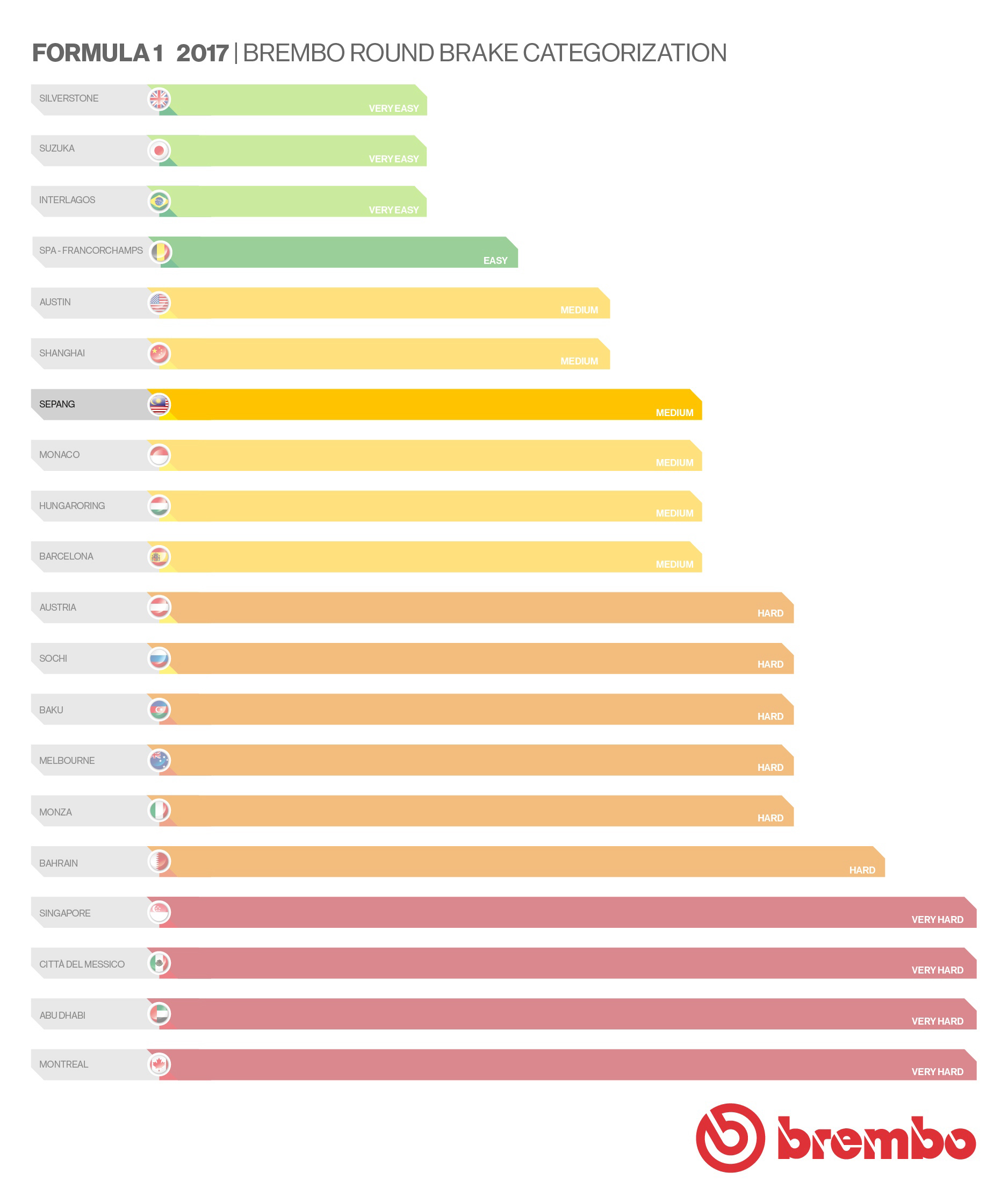
The demand on the brakes during the GP
The 15 corners on the track require drivers to use their brakes 8 times per lap. From the starting line to the checkered flag, each driver uses his brakes about 450 times for a total of just under 16 minutes.
On average, the brakes are used for 17 seconds per lap, which is similar to the time spent braking in Budapest and Monaco, however these tracks are a lot shorter than the 6,061 yards at Sepang.
The average deceleration is 3.7 G, but eliminating the hairpin corners at turns 2 and 14 would result in a much higher figure.
The energy dissipated in braking over the course of the race by a single-seater is low: barely 100 kWh, the second lowest in the championship after the 76 kWh at Silverstone.
At Spa-Francorchamps the average registered is 102 kWh and at Suzuka it reaches 109 kWh.
From the starting line to the checkered flag, each driver exerts a total load of 47 metric tons on the brake pedal. This figure is not that far off from what is recorded at Silverstone (46.2 metric tons), but the air temperature there is significantly lower than in Malaysia, where the heat and humidity require greater physical effort.
